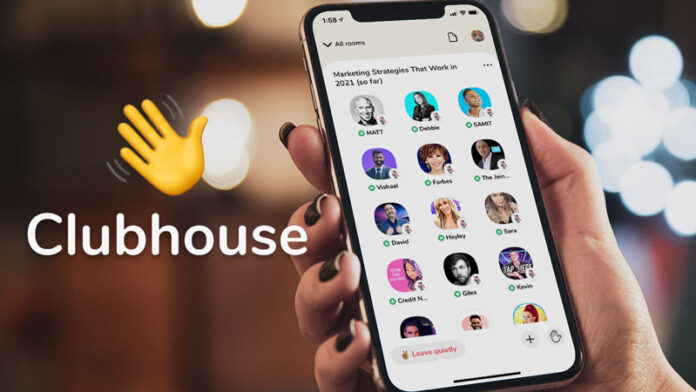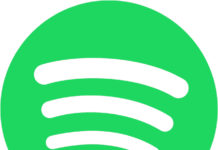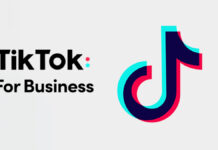So you’ve heard of Clubhouse but you aren’t entirely sure what it is or, more importantly, if it’s worth taking note of? This snapshot will bring you up to speed.
In case you haven’t heard, there’s a new social network making waves on the interwebs. It’s called Clubhouse and it launched in March last year. That’s right. Just as you were finally getting the hang of TikTok and perfecting your #plankchallenge a brand-new social network was sneaking onto the scene. And we say “sneaking” because Clubhouse is clandestine to the max. In December, it had 600 000 users. It currently has around 10 million active weekly users. And it doesn’t even exist on Android yet. How the…? Good question. Here’s the low-down on the publicity stunt virtual event that got everyone signing up, plus everything else you need to know about Clubhouse right now.
What Is Clubhouse?
It’s an audio-only social network where users can listen in on each other’s conversations – but the conversations are public and focused on a topic of interest; it’s not Eavesdroppers Anonymous.
So it’s like a podcast? Not quite. Everything is happening in real-time and there’s no editing, there are no jingles and no transitions.
Ok, so like a Twitch stream? But without the video. And the stream (called a conversation room) disappears when the host ends it, so you can’t go back and listen retrospectively. Although users were quick to find a workaround, as people do, and Clubhouse conversations are regularly livestreamed on YouTube.
How to join
We already mentioned that Clubhouse is currently only available on iOS (an Android version is reportedly in the works). But that’s only the tip of the iceberg when it comes to the app’s exclusivity. For starters, you can’t just download it and sign up – you need to be invited by an existing member. And when you do eventually join, you only get two invitations to send out. Other options are to sign up to the waiting list or buy an invitation from someone who’s selling theirs – yes, this is the world we are living in.
And then?
Once you’ve signed up, you’ll see a long list of topics that you can follow, covering everything from wellness to tech to faith to burger ratings. Under each of those topics you’ll find other users who have the same interest and you can follow them and join their conversation rooms. If a conversation is particularly interesting to you, you can virtually raise your hand (like on Teams) and the host may choose to allow you to speak. Or not.
Who’s on Clubhouse?
Unlike TikTok and Snapchat (shame) before it, Clubhouse didn’t incubate among Gen-Zs. It reportedly started out as a kind of gentleman’s club for Silicon Valley executives – but without the gender discrimination. Then celebs got in on the action. Users include the likes of Oprah, Drake, Ashton Kutcher and Malcolm Gladwell. In November last year comedian Kevin Hart joined a conversation room where users were debating his comedy. And it got heated.
The conversation that broke the algorithm
At the end of January, Elon Musk hosted a conversation on Clubhouse where he interviewed Robinhood CEO Vlad Tenev. The conversation maxed out – and then exceeded – Clubhouse’s limit of 5 000 users in a room and got even more reach through livestreams like this one. The day after that interview (1 Feb) Clubhouse had 2 million users. It now has 10 million active weekly users.
Controversies
Clubhouse is currently valued at $1 billion and has more than 180 investors. You don’t get that big that fast without a few scandals and Clubhouse has had its share. Early users didn’t like its Hotel California approach to leaving – you couldn’t. Well, not without a lot of admin, anyway. But that has since been addressed, along with ongoing reworkings around data privacy. As with any platform, there were those who decided to use the app for evil and it was outed for hosting anti-Semitic and racist conversation rooms, after which the creators put stricter user policies in place.
Now you know. But should you and your brand even care?
In a blog post, the creators of Clubhouse have said they intend to “scale the Clubhouse experience for everyone”. With that in mind, and considering the app is already growing faster than a Nando’s drive-thru queue during loadshedding, we’re expecting it to open up to a much wider audience in the coming months. And when that happens, it will offer some exciting possibilities for brands:
Communities: The Clubhouse experience is all about grouping people around shared interests and that means engaged audiences for your brand to interact with in an intimate setting.
Thought leadership: Like a podcast, you have the opportunity to share knowledge with an audience, but in real-time and with the option for them to join the conversation – to the extent that you want them to. It’s an opportunity to build trust and authority around your brand.
Virtual events: Whether we like it or not, the Covid-19 waves are rolling in like a perfect set at a big-wave surfing tournament and engaging, meaningful virtual events are going to be part of our lives for some time still. If events are part of your brand’s marketing strategy, this could be the answer until we can all get together again.
Meet and greets: Like Elon Musk inviting a fellow hotshot CEO to his Clubhouse party, facilitating an interaction where followers can speak to celebs and industry leaders, voice to voice, is PR gold for your brand.
Our take? Keep an eye on Clubhouse. Score an invitation if you can. And start thinking about how you could use it to boost your brand when the time is ripe.























































































